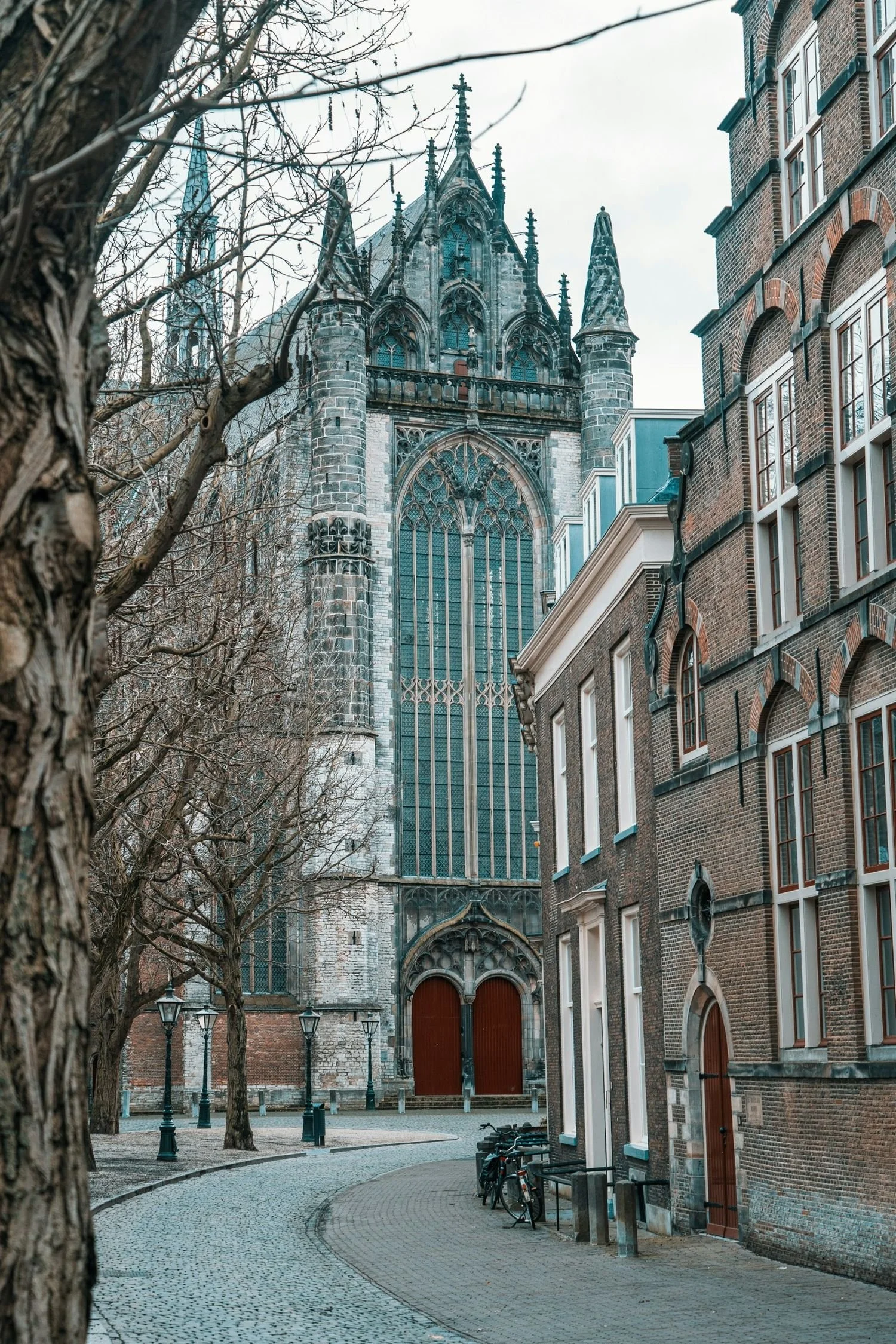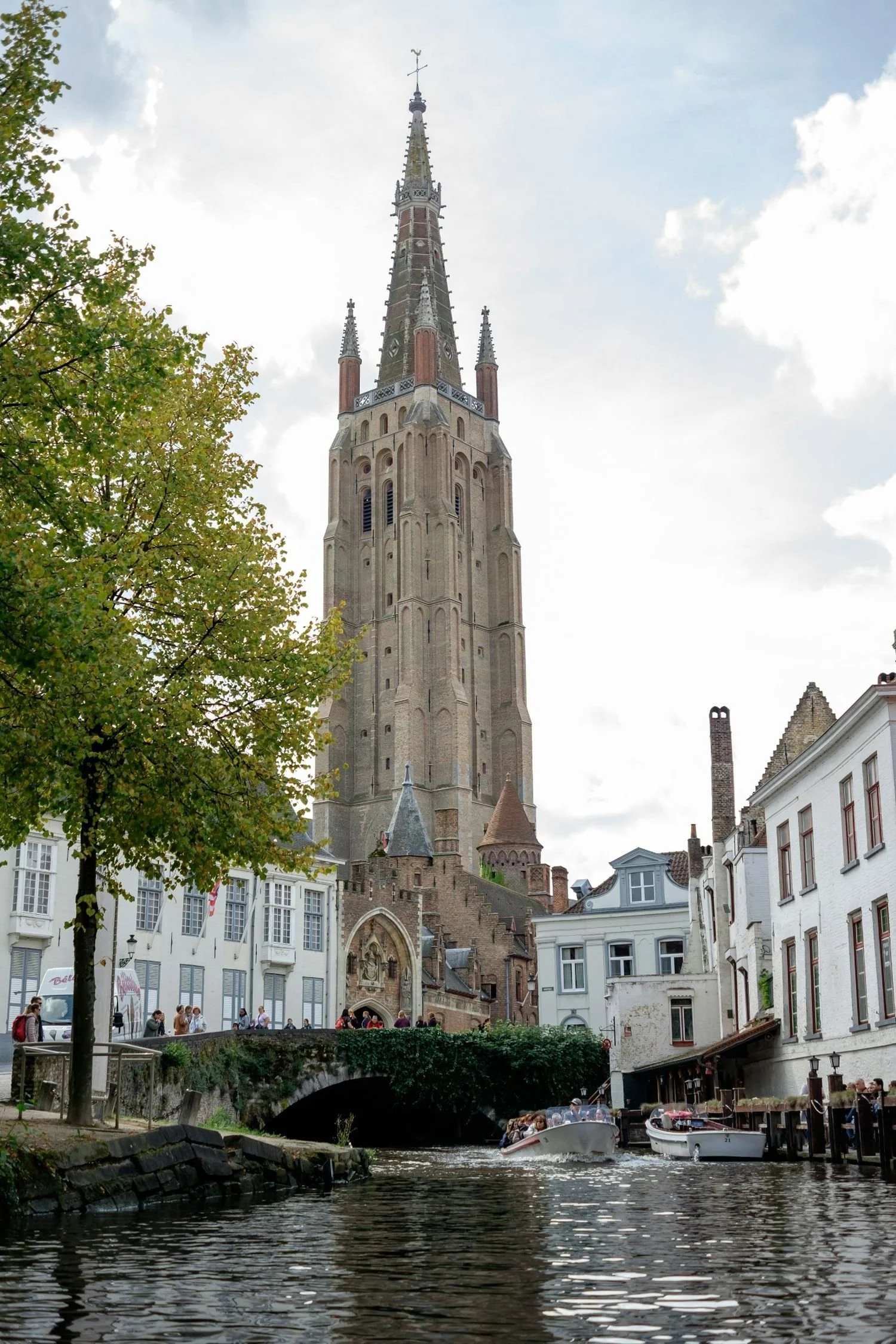There’s a certain silence you only find near old churches. Not the absence of sound, but a kind of acoustic environment. Slate underfoot. Bell chimes overhead. A cat crosses the street like it owns the place. Nothing urgent, nothing rushed. Just the quiet pulse of a village that still remembers where it began.
It’s the kind of setting you don’t notice on Instagram. There are no dramatic views. No rooftop Jacuzzis. Just age, presence, and a sense that life has been folding itself quietly into this corner of the world for centuries.
In many countries, this is exactly the kind of place people seek out. A house near the village church is considered a cultural asset, a premium slice of real estate. You’re in the heart of things, not on the edge. And the heart still matters.
Centre Stage, Historically
Churches weren’t just religious landmarks. They were the original anchor tenants. The spiritual, architectural, and social core of the town or village. People gathered there, not just to pray, but to marry, to chat, to flirt, to grieve, to hear the latest gossip and make some of their own.
In the UK, houses with “church views” routinely appear in property listings with a knowing wink, a visual shortcut for charm, heritage, and status. You don’t need to go to church to want to live beside one. It’s about landscape and layering, the pleasure of opening your window onto something that matters.
In Germany, it’s even more structured: the “Altstadt”, the old town, is protected, prized, and often expensive. Market squares, timber frames, fountains, spires. These aren’t relics; they’re assets. Living there isn’t quaint, it’s a lifestyle.
In Mediterranean countries like Italy and Spain, the church piazza is the beating heart of daily life. Shops, cafés, old men playing cards, children chasing pigeons, life happens in concentric circles around that stone square.
Real estate in those zones is highly coveted and premium. Not despite the church. Because of it.
And in places like Cambridge, where I once studied, even the smallest old houses are treated as part of a protected cultural fabric. No one would ever dream of tearing down a row of modest Victorian homes near Parker’s Piece to build something taller or shinier. It would feel absurd. Because heritage isn’t about grandeur. It’s about continuity.
Even under Mediterranean skies, the church remains the social and spatial compass, a reminder that beauty and orientation are not mutually exclusive.
And Yet, We Drift
Somewhere along the line, in some places more than others, we forgot.
Village centres became less popular. Parking is tight. The streets are narrow. It is not car centric. And so, slowly, the gravitational pull shifted. New builds sprouted on the edges. Houses came with garages, driveways, fences and silence - the curated kind, not the organic kind. And the old core? That was left to the romantics.
Maybe we thought we were modernising. Maybe we were just drifting. Like buying bigger jeans instead of questioning the dessert menu.
Architectural Harmony
One overlooked joy of living near a historic church is the quiet coherence of the built environment. These homes weren’t designed to impress on their own; they were designed to belong. Proportions align. Materials echo one another. Roof angles respond to bell towers. The effect is a kind of architectural ensemble, less like a showroom, more like a symphony.
Camillo Sitte, the 19th century Austrian city planner and architect, would have approved and argued fiercely for it. Read more here.
Maastricht: Architecture as conversation: windows, stones, and streets in harmonious dialogue. Camillo Sitte would nod in approval.
Modern developments often strive for contrast or novelty. But there’s a different kind of beauty in streetscapes that have evolved over time, where even the imperfections feel orchestrated.
Camillo Sitte would have looked at today's housing estates with their identical facades and mathematically perfect spacing and likely suffered an aesthetic breakdown. He understood that beauty in urban spaces comes from informed irregularity, not cookie-cutter precision.
Living Memory
A house in the village centre, near the church, isn’t just well-situated. It’s rooted.
There’s continuity in hearing the bell chime on weekends. In seeing the same crooked paving stone outside your front step and thinking: someone else noticed this, a hundred years ago.
Light behaves differently in the village centre. It bounces off pale pastel stone façades. It catches iron railings. It filters through vines that have seen more springs than you have.
I’ve experienced this first-hand that moment when you're sipping coffee by the window and suddenly the church bells mark noon, and you realise you're sharing this exact acoustic experience with someone who lived in your house a century ago. There’s something unexpectedly grounding about that.
Churches are more than silhouettes. They’re emotional metronomes. They give a village a skyline and a spine. Even if you’re not attending Sunday services, even if you don’t know the name of the priest, you still live in relation to the spire. It orients you.
And orientation, these days, is underrated, yet needed.
Social Texture
You don’t need grand gestures to feel connected. You need proximity. A wave from the woman opposite watering her plants. A dog barking in a front garden. The opening of shutters in the morning. A chat with your neighbour returning from a trip to the bakery.
You not only watch life happen from your window, you experience it through connection, but because it’s there. Real and un-curated. The rhythms of daily life unfolding in slow, familiar loops.
There is a recurring theme about “community” in abstract terms. But in the village centre, it’s not abstract. And sometimes five steps away when you realise you’ve forgotten the salt.
Morning light glances off the canals of Bruges, while the towering church quietly anchors the scene — proof that charm and structure can coexist.
The Real Luxury
We talk a lot about luxury in real estate. Space. Light. Privacy. Amenities. A house in the village centre can give you all that and more.
There’s another kind of luxury that comes from living somewhere with memory. Somewhere that didn’t appear on a spreadsheet two years ago but grew over generations.
The discerning buyer understands that true luxury isn’t manufactured, it’s inherited. A home near a historic church offers something no developer can replicate: authenticity.
It’s the difference between buying new furniture and living with antique pieces that have been inherited, passed down, marked by use and meaning.
While cookie-cutter developments rise and fall with market trends, homes with historic context and architectural integrity tend to hold their value through economic cycles. They’re the blue chips of real estate.
Final Thought: Maybe the Centre Still Holds
We’ve built enough cul-de-sacs. Enough garage-fronted rows. Enough places designed to be left.
Maybe it’s time to return to the centre, physically and culturally. To see village churches and the surrounding centre as ensembles, as indicators. Not as outdated anchors, but as steady ones.
Because what we’ve lost in efficiency, we might gain back in human scale. In coherence. And who knows, maybe that old house near the church isn’t just a leftover from the past.
Maybe it’s the beginning of something better.
written by Helen M. Krauss



